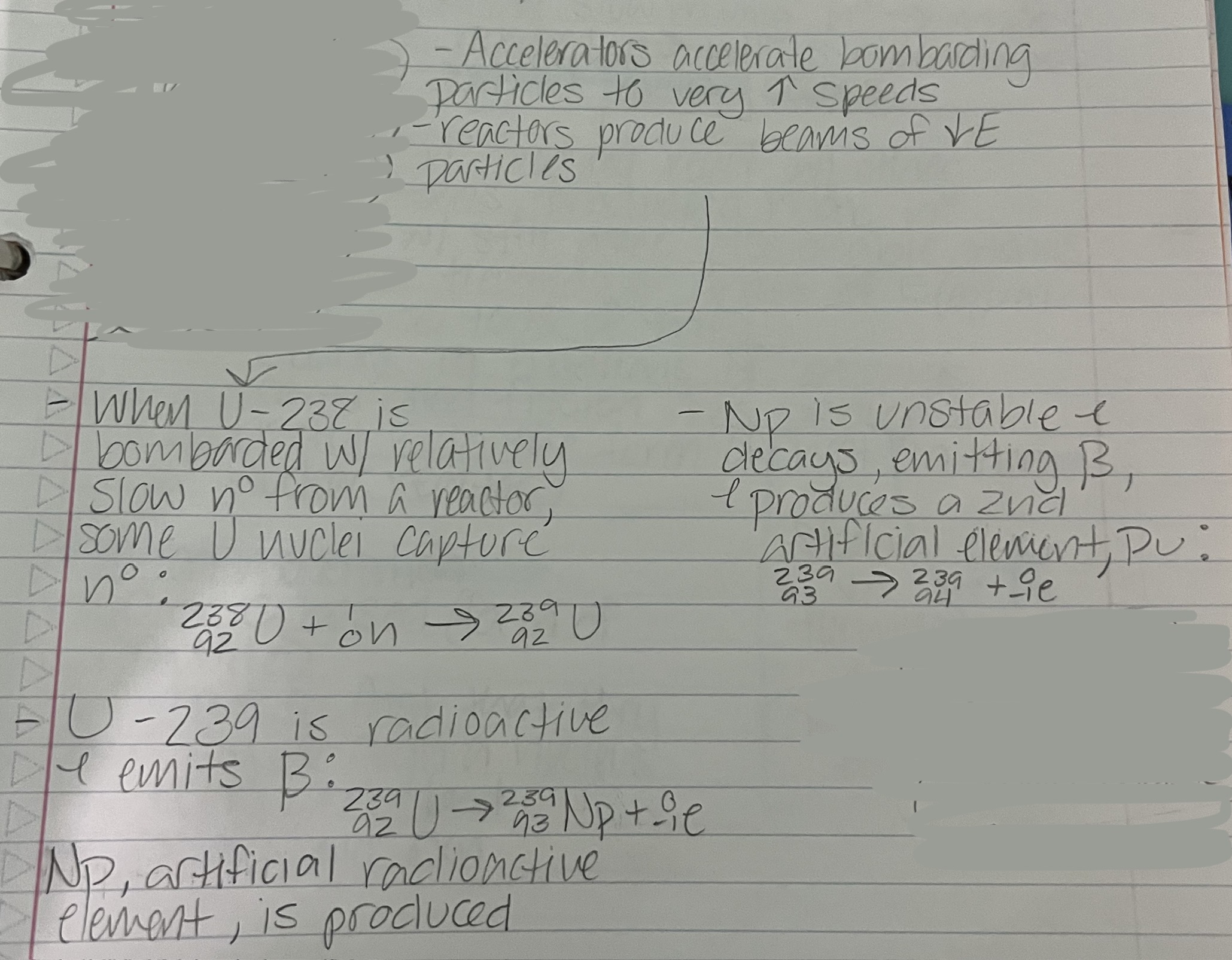Chapter 25 - Nuclear Chemistry
25.1 - Nuclear Radiation
radiation - particles and rays emitted by radioactive matter
isotope - number of protons don’t equal neutrons
radioisotope - nuclei of unstable isotopes; gain stability by giving off large amounts of energy
nuclear reactions are not affected by temperature, pressure, or catalysts; they can’t be slowed down, sped up, or stopped
Becquerel
1852-1908
French Chemist
1896 - accidental discovery
studying ability of uranium salts that had been exposed to sunlight to fog photographic film plates
there was a storm → no sunlight
left sample on plate
uranium still fogged plate
Marie and Pierre Curie
2 of Becquerel’s associates
showed that rays emitted by uranium caused the plates to fog up
helped discover radiation
the stability of a nucleus depends on the ratio of protons to neutrons and the overall size of the nucleus
an unstable nucleus releases energy by emitting radiation during the process of radioactive decay which are spontaneous and don’t require input of energy
TYPES OF RADIATION
Alpha
238/92 U → 234/90 Th + 4/2 He
blocked by sheet of paper
alpha particle - 2 protons, 2 neutrons, double positive charge
atomic number decreases by 2 and atomic mass decreases by 4 after decay
Beta
beta particle - electron resulting from the breaking apart of a neutron → breaks up into protons, which stay in nucleus, and electron, which is released
14/6 C → 14/7 N + 0/-1 e
stopped by wood
atomic number increases by 1 and the atomic mass stays the same after decay
Gamma
gamma ray - high energy photon emitted by radioisotope
230/90 Th → 226/88 Ra + 4/2 He + y
nuclei often emit gamma rays along with alpha and beta particles
atomic number and mass are not altered dafter decay
stopped by lead/concrete

25.2 - Nuclear Transformations
band of stability - a region on a graph where the number of neutrons vs the number of protons for stable nuclei
nuclear force - attractive force that acts between all nuclear particles that are extremely close together; EX: protons and neutrons in nucleus
neutron to proton ratio determine type of decay
positron - particle with mass of an electron but positive charge
atomic number > 83 → radioactive
unstable - either p>n or p<n

radioactive energy comes from a small quantity of mass
half life - time required for one half of sample to decay; every radioisotope has this
after each half life (t1/2), half of the existing radioactive atoms have decayed into atoms of a new element
transuranium elements - atomic number > 92
don’t occur in nature
radioactive
transmutate
synthesized in nuclear reactors and accelerators
transmutation - conversion of an atom of one element to another; can occur through radioactive decay or when particles bombard the nucleus of an atom

25.3 - Fission and Fusion of Atomic Nuclei
fission - splitting nuclei into smaller fragments
used only with U-235 and Pu-239
struck with slow moving neutrons → more neutrons released → strike other nuclei → chain reaction (some of the neutrons produced react with other fissionable atoms, producing more neutrons which react with fissionable atoms)
tremendous amounts of energy (= to 20 000 tons of TNT)
controlled fission reactions produce useful energy in nuclear reactor (heat → steam → turbines → electricity)
neutron moderation - slows down neutrons so reactor fuel captures them to continue chain reaction; H2O or C based (form of graphite)
neutron absorption - reduces number of slow moving neutrons before they hit fissionable matter; use control rods which are made up of cadmium
nuclear waste - water cools spent rods and acts as radiation shield to reduce radiation levels
fusion - nuclei combine to produce nucleus of greater mass; more energy than fission; energy released by sun — needs high temperatures
25.4 - Radiation in your Life
ionizing radiation - radiation emitted by radioisotopes; enough energy to knock electrons off some atoms of the bombarded substance to produce ions
Geiger counters, scintillation counters, and film badges are used to detect radiation

neutron activation analysis - procedure used to detect trace amounts of elements in samples